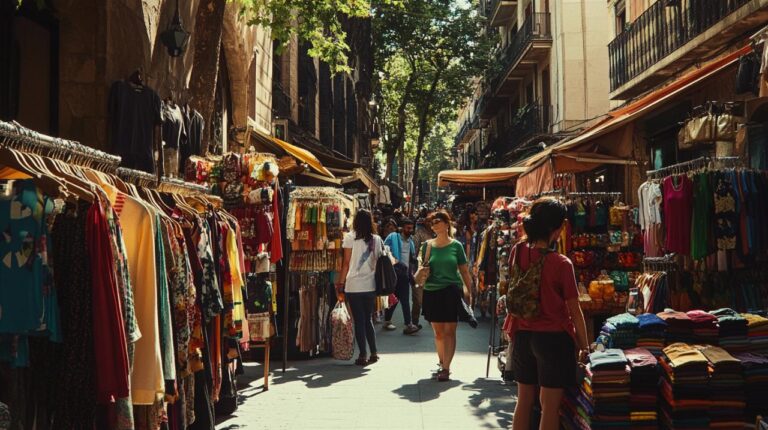Nestled in the heart of northeastern France, the Aube department offers a perfect blend of historical richness, natural beauty, and cultural significance. This lesser-known gem in the Champagne region provides visitors with an opportunity to embrace green tourism while exploring medieval towns, serene riverside communities, and lush landscapes. Let's embark on an eco-friendly journey through Aube's most captivating urban destinations.
Discovering aube's urban gems: cities and towns worth visiting
The Aube department, located about 150 kilometers southeast of Paris in the Grand Est region, boasts several charming cities and towns that showcase the area's rich heritage. Accessible by train from Paris to major hubs like Troyes or Nogent-sur-Seine, these urban centers serve as gateways to experiencing authentic French culture away from the usual tourist crowds. While a car is recommended for comprehensive exploration, many areas can be discovered through the region's extensive greenways, promoting sustainable travel options.
Troyes: Medieval Marvel with Half-Timbered Houses and Gothic Churches
The departmental capital of Aube, Troyes captivates visitors with its exceptionally preserved medieval center. Walking through its historic heart feels like stepping into a living museum, where colorful half-timbered houses line narrow, winding streets. The city's magnificent Gothic cathedral stands as testimony to the architectural prowess of bygone eras. Troyes bears the cultural imprints of various civilizations—Gauls, Romans, Franks, and Carolingians—all contributing to its unique character. For art enthusiasts, the Cité du Vitrail offers a fascinating glimpse into the region's renowned stained glass craftsmanship, a tradition dating back centuries. As a base for exploring the wider region, Troyes offers accommodations like the Brit Hôtel Les Comtes de Champagne, providing comfortable lodging in a historic setting.
Nogent-sur-seine and bar-sur-aube: charming riverside communities
Along the gentle waters of the Seine, Nogent-sur-Seine presents a picturesque landscape that once inspired literary giant Gustave Flaubert for his novel “L'éducationsentimentale.” Today, visitors can follow a dedicated walking tour tracing these literary connections. The town's crown jewel is undoubtedly the Camille Claudel Museum, celebrating the works of the brilliant sculptor who was born in this region. Just 5 kilometers away, the elegant La Motte-Tilly castle offers further cultural exploration. Equally charming, Bar-sur-Aube represents the quintessential riverside community that epitomizes slow tourism. These smaller towns, consistently ranked among the top places for quality of life in the region, offer authentic experiences where visitors can engage with local producers, sample regional delicacies, and embrace the unhurried pace that defines green tourism in Aube.
Heritage treasures: historical sites and cultural landmarks
The Aube department in northeastern France offers travelers a unique opportunity to explore centuries of rich heritage while embracing green tourism principles. This region of the Champagne countryside presents a fascinating tapestry of historical sites and cultural landmarks that can be discovered through responsible travel practices.
Medieval Architecture and Religious Buildings Throughout the Region
Troyes, the capital of Aube, stands as a magnificent showcase of medieval architecture with its well-preserved historic center. Walking through its narrow streets lined with colorful half-timbered houses creates an authentic journey back in time while practicing slow tourism. The city's magnificent Gothic cathedral serves as a centerpiece of religious heritage that has witnessed the influence of Gauls, Romans, Franks, and Carolingians throughout the centuries.
Beyond Troyes, the Aube countryside reveals hidden architectural gems worthy of exploration. The collegiate church of Villemaur, located about 30 km from Nogent-sur-Seine, features a remarkable wooden bell tower and a 500-year-old rood screen that showcases exceptional craftsmanship. Templar commanderies scattered across the region, particularly in Avalleur, offer fascinating insights into the Knights Templar history. During summer months, these historical sites host special events allowing visitors to connect with local history while supporting cultural preservation efforts.
The region's stained glass art tradition represents another aspect of its religious architectural heritage. The Cité du Vitrail in Troyes celebrates this craft that has adorned local churches for centuries, making it an essential stop for cultural heritage enthusiasts practicing responsible tourism in Aube.
Museums and Artistic Legacy: From Renoir to Modern Exhibitions
Aube proudly honors its artistic connections through thoughtfully curated museums. The Camille Claudel Museum in Nogent-sur-Seine stands as a must-visit destination for art lovers. This institution celebrates the remarkable sculptor who spent part of her life in the region, displaying an impressive collection of her works alongside pieces by her contemporaries.
Literary heritage also finds representation in Nogent-sur-Seine, where Gustave Flaubert drew inspiration for his novel L'éducation sentimentale. Visitors can follow a dedicated walking tour tracing the author's footsteps—an eco-friendly way to discover the town's cultural significance while minimizing environmental impact.
The artistic legacy continues in Essoyes, where Auguste Renoir spent numerous summers painting the picturesque Champagne countryside. His family home has been transformed into a museum that provides intimate insight into the artist's life and creative process. This connection to Impressionist art adds another layer to Aube's cultural richness.
History enthusiasts will appreciate the Napoleon Museum housed in Brienne-le-Château's former Military School where the emperor studied as a young man. This institution preserves artifacts and stories from a pivotal era in French history. Just 5 kilometers from Nogent-sur-Seine, the elegant La Motte-Tilly castle offers another historical perspective with its preserved period architecture and furnishings.
Exploring these cultural treasures through green tourism practices—using public transportation when possible, respecting site conservation efforts, and supporting local communities—allows travelers to enjoy Aube's heritage while helping preserve it for future generations. The regional tourism board promotes responsible travel options, including a digital travel guide for Aube en Champagne available for just €0.90, featuring addresses and ideas for environmentally conscious holidays throughout this culturally rich corner of the Champagne region.
Natural wonders: exploring aube's diverse landscapes
 Nestled in the Grand Est region of northeastern France, approximately 150 kilometers southeast of Paris, the Aube department offers a pristine natural environment that makes it an ideal destination for green tourism enthusiasts. The region boasts diverse landscapes ranging from lush forests to serene lakes and winding rivers, creating a paradise for nature lovers seeking a responsible travel experience. When visiting this picturesque region, travelers can immerse themselves in stunning natural settings while embracing sustainable tourism practices that protect these precious ecosystems for generations to come.
Nestled in the Grand Est region of northeastern France, approximately 150 kilometers southeast of Paris, the Aube department offers a pristine natural environment that makes it an ideal destination for green tourism enthusiasts. The region boasts diverse landscapes ranging from lush forests to serene lakes and winding rivers, creating a paradise for nature lovers seeking a responsible travel experience. When visiting this picturesque region, travelers can immerse themselves in stunning natural settings while embracing sustainable tourism practices that protect these precious ecosystems for generations to come.
Orient forest regional natural park: biodiversity and outdoor activities
The crown jewel of Aube's natural landscape is undoubtedly the Forêt d'Orient Regional Nature Park, an 82-hectare protected area teeming with biodiversity. This magnificent park serves as a sanctuary for numerous plant and animal species while offering visitors a chance to connect deeply with nature. The park features extensive trail networks for hiking and cycling, allowing guests to explore at their own pace while minimizing their environmental impact. For those seeking a more active experience, the park provides numerous outdoor activities that blend adventure with ecological awareness. Green tourism initiatives within the park encourage visitors to appreciate the delicate balance of this ecosystem while participating in responsible recreational pursuits. The network of greenways throughout the region makes it easy to explore via bicycle, reducing carbon emissions while enhancing the travel experience. Many local service providers have committed to responsible tourism approaches, offering eco-friendly accommodations and activities that align with sustainable practices.
Lakes and Waterways: The Seine River and Lake Orient System
The waterways of Aube form a vital component of its natural landscape, with the Seine River and the Lake Orient system creating a stunning blue network across the region. The three main bodies of water – Lac d'Orient, Lac du Temple, and Lac Amance – offer peaceful retreats where visitors can engage in water-based activities while respecting the natural environment. These lakes serve as important habitats for local wildlife while providing recreational opportunities for responsible travelers. Beyond the lakes, the Canal de la Haute-Seine presents excellent options for boating and cycling along its banks. The waterways of Aube invite slow tourism, encouraging visitors to disconnect from daily life and truly appreciate the natural world around them. This approach to travel allows guests to form meaningful connections with the landscape while minimizing environmental impact. For those seeking a unique perspective of the region, activities like hot-air ballooning provide breathtaking views of these interconnected waterways and forests without disturbing the delicate ecosystems below. Through these water-focused experiences, travelers gain a deeper appreciation for the hydrological systems that have shaped Aube's distinctive geography.
Agricultural heritage and culinary delights
The Aube department, situated in northeastern France's Grand Est region, offers visitors a perfect blend of agricultural richness and gastronomic excellence. This area, approximately 150 kilometers southeast of Paris, serves as an ideal destination for green tourism and responsible travel experiences. The rural landscapes of Aube tell the story of centuries-old farming traditions while providing visitors with authentic culinary adventures that celebrate local production and sustainability.
Champagne Vineyards and Wine Tourism in Southern Aube
Southern Aube stands as a vital part of France's prestigious Champagne region, with over 6,000 hectares of meticulously tended vineyards. The area represents green tourism at its finest, where visitors can discover the art of champagne production while respecting the natural environment. Many vineyards have embraced sustainable practices, allowing travelers to experience wine tourism with minimal ecological impact.
The Rosé des Riceys, a unique still wine produced exclusively in this region, offers connoisseurs a distinctive tasting experience beyond traditional champagne. Throughout the year, the region celebrates its viticultural heritage with events like the Saint-Vincent festival for winegrowers and the annual Champagne fair, where visitors can meet local producers committed to environmentally conscious methods.
For those seeking an immersive experience, several champagne houses offer guided tours through their vineyards, demonstrating the seasonal cycle of vine cultivation and the careful harvesting process. This slow tourism approach encourages visitors to disconnect from daily routines and develop a deeper appreciation for the land and its products. Cycling along the region's greenways provides an eco-friendly way to explore multiple vineyards while enjoying the picturesque countryside.
Local Gastronomy and Farm-to-Table Experiences in Rural Communities
Aube's rural communities showcase the department's commitment to farm-to-table dining and preservation of culinary traditions. The region's gastronomic identity extends far beyond its famous wines to include celebrated local specialties such as Chaource cheese, a creamy, artisanal cheese produced in small dairies throughout the countryside. The Andouillette de Troyes, a distinctive sausage, represents another regional delicacy crafted by local butchers following time-honored recipes.
Many rural farms in Aube have opened their doors to visitors, offering authentic farm-to-table experiences where guests can participate in harvesting activities before enjoying meals prepared with ingredients sourced directly from the surrounding fields. These experiences align perfectly with responsible travel principles by supporting local producers and reducing food miles.
Sweet treats hold a special place in Aube's culinary landscape, with specialties including Reims pink cookies, traditional gingerbread, and delicate macaroons. Small bakeries and confectioners throughout the rural communities maintain these recipes, often incorporating locally sourced honey and fruits.
Green tourism initiatives have inspired many local restaurants to highlight seasonal menus featuring ingredients from nearby farms. This sustainable approach not only ensures exceptional freshness but also strengthens the economic fabric of Aube's agricultural communities while providing visitors with genuine tastes of the region's terroir.








